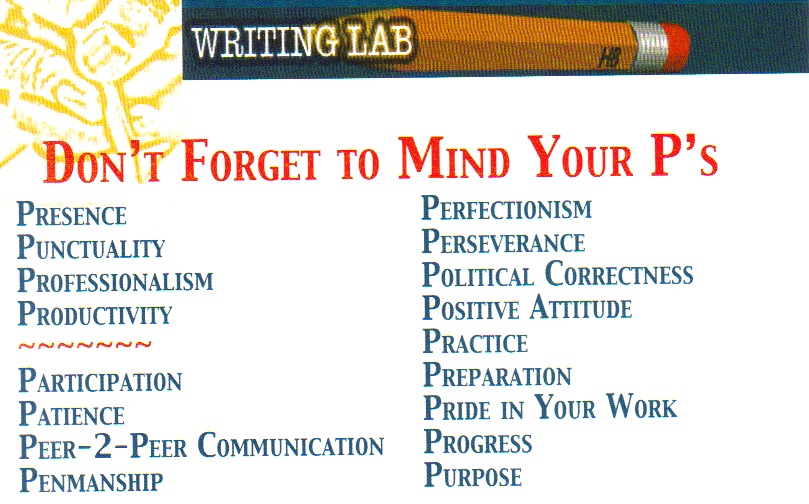Don't Be Overwhelmed!
"Perfection consists not in doing extraordinary things but in doing ordinary things extraordinarily well." — Angelique Arnauld

Yes, there is a lot of information here. No, we do not expect you to have each word on this webpage memorized. We just want you to be prepared so that you give a good, productive interview. We aren’t expecting perfection, but we do want to see ample evidence to suggest that you are a humble, hard-working, quick-learning teammate with the potential to improve.
How does the interview process work?
Interviews take place at the Main Writing Lab. The Writing Lab Director will e-mail you the time and date of your interview. Please arrive at least 15 minutes early. If you have any questions or need further information, please contact the Writing Lab Director or the Main Writing Lab. There are two components to this interview. The entire interview will take approximately 1.5 to 2 hours. Please click on each of the four components below to learn more.
This component consists of an interactive discussion with the Writing Lab Director and some experienced Writing Lab assistants in which we discuss with you the Writing Lab’s services, your labbie skills and personality, and your “fit” in a professional setting versus a classroom setting.
This component is a 30-minute to one-hour grammar presentation by the applicant on one of the assigned Skills of the Week; your assigned skill will be one of the areas checked on your Diagnostic Test feedback form. The purpose of this Grammar Skill-of-the-Week presentation is to determine your readiness for planning and presenting grammar lessons for 5 to 18 students as part of the Writing Lab’s Tutoring System. Feel free to create any kind of audio-visual, including a PowerPoint or Prezi. It’s all right for you to use one of the PowerPoints the Writing Lab has already created; in fact, we prefer that you use one of our PowerPoints to ensure that the grammatical information is accurate, credible, and reliable.
You may also use any other information from our webpage or any information we have in the Writing Lab. Be familiar with your assigned skill so that you can give an impressive presentation. Here are some tips for a strong presentation:
- Plan a 30-minute to one-hour presentation (depending on the time you are allotted) on the grammar skill you are assigned. Use an audio-visual aid (the whiteboard, a Writing Lab PowerPoint, flash cards, etc. – your choice);
- Begin with an engaging introduction (ice-breaker or opener) related to your skill. The Lab has a binder with creative beginnings for grammar lessons. Feel free to stop by the Lab and look through the examples in the binder;
- Teach the skill. Go beyond reading the text on the PowerPoint slides. Be explanatory. Teach. Simplify. Amplify. Interact;
- Use terminology that is both accessible and accurate;
- Time yourself to ensure that you cover the skill in the time allotted;
- Be prepared to answer questions from the audience;
- Read rules/concepts from Real Good Grammar, Too and at least one other reputable grammar handbook;
- Use one of the PowerPoint presentations from the Writing Lab’s website: Feel free to use our PowerPoint as is, or create your own PowerPoint using ours as a foundation for your own creation. In fact, the Lab prefers that you teach using one of its PowerPoints rather than risking creating one yourself that might contain rules from unreliable websites;
- Be animated and dynamic when presenting;
- Go over your presentation or the skill with a friend, and try to anticipate questions and responses;
- Don’t create or contrive rules, terminology, or explanations.
AUDIENCE: Experienced Writing Lab assistants and the Writing Lab Director role-play as students.
EQUIPMENT: The Tutoring/Training Room has an LCD projector, a desktop computer with Internet access, a document camera, a presentation remote, and two large dry-erase boards with markers and erasers.


